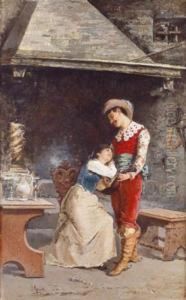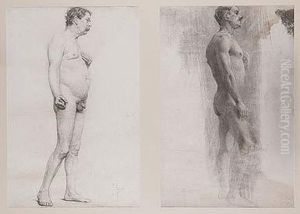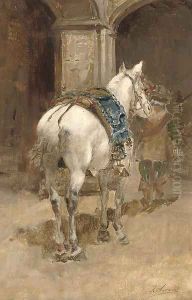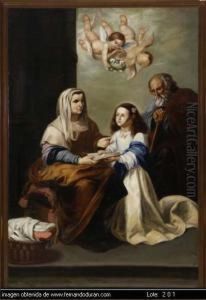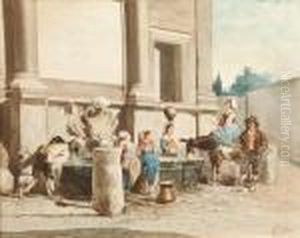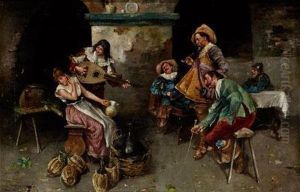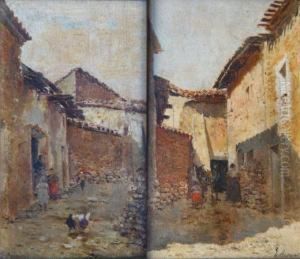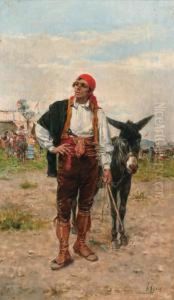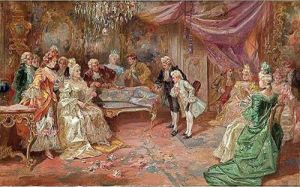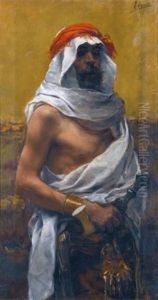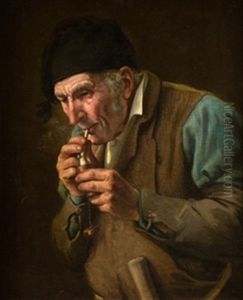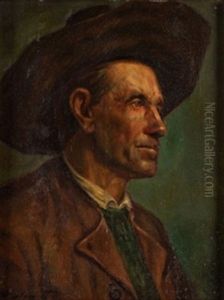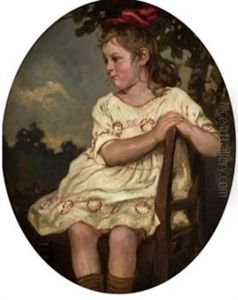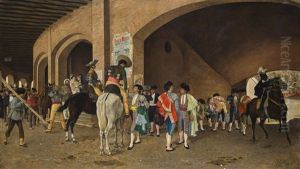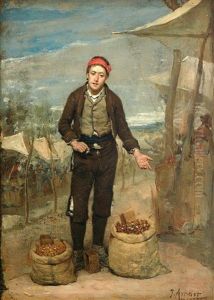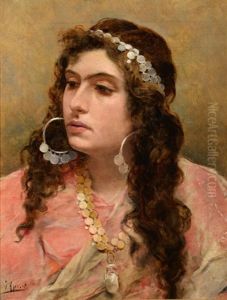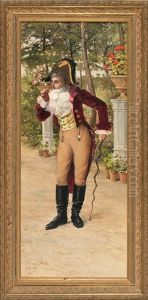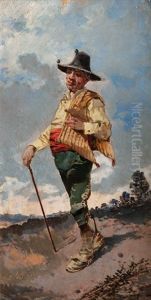Joaquin Agrasot y Juan Paintings
Joaquin Agrasot y Juan was a Spanish painter born on January 24, 1836, in Orihuela, a city in the province of Alicante, Spain. Agrasot was a prominent figure in the Spanish art scene during the 19th century and is often associated with the aesthetic movements of the time, including Romanticism and Realism.
Agrasot began his artistic training at the Royal Academy of Fine Arts of San Carlos in Valencia. He showed great promise from an early age and was awarded a scholarship to further his studies in Rome. It was in Italy where he was greatly influenced by the Italian masters, and his style began to evolve, integrating elements of the Italian Renaissance and Baroque traditions.
After spending several years in Italy, Agrasot returned to Spain and settled in Valencia, where he became an influential member of the local artistic community. He was involved in the founding of the Círculo de Bellas Artes de Valencia (Valencia Circle of Fine Arts) and participated in numerous exhibitions, earning accolades for his work. His paintings often depicted historical scenes, genre paintings, and portraits. He was known for his skillful use of light and color, as well as his ability to capture the emotional depth of his subjects.
Agrasot's work was not limited to paintings; he also created frescoes and was involved in the decoration of several public buildings in Valencia, such as the Church of San Juan del Hospital. Throughout his career, he maintained a balance between his artistic endeavors and his role as a teacher, imparting his knowledge to the next generation of Spanish artists.
Despite his success, Joaquin Agrasot y Juan remained relatively conservative in his style, not fully embracing the more avant-garde movements that were emerging at the turn of the 20th century, such as Impressionism or Cubism. Nevertheless, his work has been recognized for its contribution to the Spanish art of the period and remains appreciated for its technical proficiency and emotional resonance.
Joaquin Agrasot y Juan passed away on January 9, 1919, in Valencia, leaving behind a legacy that has been celebrated in Spanish art history as that of a dedicated artist who contributed significantly to the cultural heritage of Spain.


